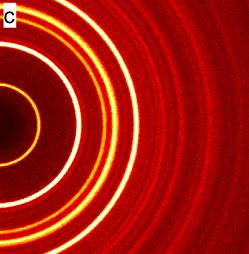Just a word of caution: Non-peer reviewed, non-replicated, rushed-looking preprint, on a topic with a long history of controversy and retractions. So don’t get too excited yet.
Okay so I agree that it needs to be peer reviewed and independently verified before we can trust it. But how exactly does the preprint look rushed?
It’s visibly made in word. That’s enough to be rushed.
Exactly. Most papers I’ve seen out there use LaTeX. This is clearly Microsoft Word.
deleted by creator
Most engenee fields use word…many don’t even accept latex…judging quality of work bases on how a paper looks is shallow and irresponsible.
In physics, however, using Latex is absolutely the norm, and on the arxiv it’s also absolutely the norm. That they aren’t using it shows at the very least that they’re out of touch with academic practice. I mean, if their extraordinary claim is true it would be one of the most significant discoveries of the century and pretty much a guaranteed Nobel prize. Therefore you might think they would put at least some amount of effort into presenting their results, such as producing nice looking plots, and, well, using Latex like a normal working physicist. The fact that they don’t doesn’t mean that they’re wrong, but it doesn’t exactly increase their credibility either.
PS: I also just noticed that one of their equations (p. 9 in 2307.12008) literally contains the expression “F(00l)”. Again, maybe they’re just oblivious and didn’t realize that could look like they’re calling us fools, but the extraordinary claims together with the rather unorthodox and low-effort presentation make me very skeptical.
This is fair enough…but still seems odd to judge paper solely based on text editor choice…judging paper based on clear errors in presented information is fair game.
Hi. I hold 3 degrees in engineering. 100% of what you said is wrong.
Latex is the norm in any engineering publication I’ve ever been involved with, be it as author, reviewer, or editor. The ones that do take word do so reluctantly and only in a way they can readily convert to latex later.
Judging a quality of a word based on how a paper looks is perfectly valid. I’m disinclined to trust research by people not willing to put in the minuscule effort of typesetting a paper. What else did they cut corners on?
And it definitely looks it. That is, shitty.
I would also like to know. Apparently there were some proofreading errors etc. Someone in reddit explained that rushing the publish might be explained by wanting to stake the claim and get the ball rolling on reproducing the results as fast as possible.
Honestly as someone who is also in research, that is pretty understandable. Preprint papers are all subject to peer review and editing after the fact, but are a good opportunity to stake your claim on a big discovery before someone else can. Preprints are inherently not final versions and I guarantee that the mistakes will be caught before publication.
As someone that no longer has access to university library’s journal subscriptions, I very much support publishing these in a openly accessible manner.
Have you… seen the… figures?!! Also, the Arxiv listing had a spelling mistake. “First” was spelled as “firs”.
Reposting my comment from another thread to add a bit of context in case anyone’s curious.
So I read the paper, and here’s a tldr about how their material apparently gains its properties.
It is hypothesized that superconductivity properties emerge from very specific strains induced in the material. Hence why most of the discovered superconductors require either to be cooled down to very low temperatures, or to be under high pressures. Both shrink the material.
What this paper claims is that they have achieved a similar effect chemically by replacing some lead ions with copper ions, which are a bit smaller (87 pm for Cu vs 133 pm for Pb). This shrinks the material by 0.48%, and that added strain induces superconductivity. This is why it apparently works at room temperature — you no longer need high pressures or extreme cold to create the needed deformation.
Can’t really comment on how actually feasible or long-lasting this effect is, but it looks surprisingly promising. At least as a starting point for future experiments. Can’t wait for other labs’ reproduction attempts. If it turns out to be true, this is an extremely important and world-changing discovery.
deleted by creator
Long-distance energy transfer without energy loss will make it possible to connect more energy grids and sources together, so stuff like the saharan desert providing solar power to Europe, for example, suddenly becomes feasible. Maglev trains will no longer require lots of power to run, since they could utilize superconductor magnetic levitation. You could make super-efficient processors that wouldn’t really heat up at all. Superconductors are also key to quantum computers, so expect lots of advancements in that field as well. They will also make it much easier to build and run fusion power experiments.
Lots of tech in general would benefit from this discovery, stuff like MRIs, electric vehicles, space telescopes or particle accelerators would become way more efficient, cheaper and easier to produce.
Edit: also, check out this video by Isaac Arthur for some more sci-fi examples of what this tech can be used for in the future (discussed in the second half). It’s more space-colonization-focused and kinda like a thought experiment, but interesting nonetheless.
God damn this sounds exciting… But also like 100 years away 🙁
Not really. If that turns out to be true (nothing is guaranteed yet), the processes described are pretty straightforward and don’t require any super-advanced tech to be reproduced. Full-scale production could be rolled out in mere years. That would become beneficial for stuff like MRIs or electric cars as soon as production starts.
After that, my guess would be that some large-scale energy infrastructure projects, for example, could be completed in about a decade.
I hope you are right
Does this get us hovering without rails? Could we theoretically generate a magnetic field strong enough to repulse the earth? Or is that still Science Fiction?
You still need a magnet-superconductor pair for quantum locking and magnetic levitation. This is called the Meissner effect and it seems like it has been confirmed for this material. Here’s a video showing an example of such a system.
Before, the best way to scale this up might’ve been to make permanent magnet rails and run a superconductor train along those rails, but that would have been totally infeasible and inapplicable in real life, since building rails out of permanent magnets is expensive and dangerous, and the train would need to house a really large superconductor chilled to liquid nitrogen temperatures. You couldn’t have built a track out of superconductors irl because good luck keeping those at the temperatures required for superconductivity to kick in.
If this material turns out to actually work as claimed and to be producible at scale, you can switch those and make an electromagnetic train that travels along superconductor tracks. Which is way easier, cheaper and much more doable in general.
But the earth’s magnetic field is extremely weak, and even the tiniest pieces of superconductors are unable to lock with it. So no, it does not allow for trackless levitation.
But a cool new train system design becomes possible though!
Superconducter maglevs are feasible and have been in service for years. They are building a large line in Japan.
You’re right, haven’t heard about that one. They actually do use superconducting magnets on a train that runs along a magnetic track.
But I feel like my feasibility comment still stands. It seems like all they had built is a 18km test track, and there’s some info about extending it to 48 km, but it doesn’t seem like the extended part uses superconducting tech yet, it only mentions regular maglev. The Tokyo — Osaka line is planned for 2037. So yeah, its technically possible, but it’s not like you can cover Europe or the US with this type of track for any sensible amount of money.
That’s the cool part about room temperature superconductors, they make this type of tech possible on much larger scales.
It sounds like the full line will eventually go across most of Japan and operate in the same way as the test track, however it is expected to be very expensive, and room temperature superconductors would likely lower the cost.
I’ve seen that video so many times, but it never stops looking fake.
Superconducting materials will expel an induced magnetic field as it creates internal fields that exactly cancel out the induced one. You’d still need some sort of “rails” to created the induced field and to move it to generate forward motion.
That is for the Meissner effect I think. I guess what I was thinking is to use the SC to create an incrediblely strong electromagnet to repel the Earth’s magnetic field. But it looks like we are orders of magnitude away from that
The earth’s magnetic field is so weak that you’d be repelling something the mass of a compass needle.
I’m most excited for fusion power generation. Currently we can ignite a fusion reaction but it takes more energy to control and contain it than you get back because it takes a huge amount of electricity to generate a magnetic field strong enough to contain the plasma. The strength of the magnetic field is proportional to the current flow, which is limited by how much cooling is required to maintain superconductivity. Without cooling taking a huge chunk of the power created by the fusion reaction we could net positive energy from the reaction and finally have a clean source of scalable nuclear power.
Yeah it is really neat. Especially since we are ostensibly close to net positive energy in some of the experimental reactors already.
If they can be made into wires (or close to them) you can create things like lossless electricity transmission, lossless batteries, electronics without heat generation (or very low), etc. Transmission lines would likely still need some sort of cooling but at room temp it would be a lot less than for the current superconductors that require at least liquid nitrogen.
What kind of magnetic fields would be induced with superconducting wires/rails carrying an AC current? Or is there even any reason to use AC with superconductive transmission?
Those ultra fast and efficient trains required superconducting rails IIRC (which I think indicates strong magnetic field because they used magnets to levitate so that the only friction involved came from air). I wonder if we could combine the trains with transmission and basically have trains that use the power mains to get from A to B.
If we had a practical room temperature/pressure superconductor its kind of hard to overstate how amazing that would be. Its the kind of thing that normally gets put in the same category as faster than light travel in terms of all the amazing stuff you could do with it.
Well for one, we’re running out of helium and fast. Helium is used to super cool existing superconductors, like those used in MRI machines.
And then there’s the power transmission benefits. Right now we’re wasting upwards of 5% of the electricity we generate.
What do you mean by wasting if it’s referring to transmission losses that’s closer to 3-6% not 50%
Ah hell I meant to type 5% and actually typed 50. I got that number here: https://www.eia.gov/tools/faqs/faq.php?id=105&t=3
Ok fair enough
I’m not entirely sure about the practical applications, but my gut feeling tells my it’s hella cool.
USB-D
No. Just no. C is good enough. I’m not buying anymore fucking cables.
floatation devices? I would like to know as well.
Interesting and it wouldn’t be a ceramic. Downside is that it is lead based. Not exactly good for the environment or very flexible without breaking. Lead doesn’t make good wire.
Not thrilled that it is a lead alloy. Just when we are starting to get rid of all the lead in our communities, this would put it back as part of critical infrastructure everywhere…
You probably shouldn’t look up what most solder is made with, then.
Lead never went away, and it never will. It just stopped being put in things like gas and paint.
Leas-free solder is now the standard due to RoHS, at least in Europe. It doesn’t stick as well as Pb-Sn solder though, annoyingly.
The transition to lead free solder (and lack of experience using it) led to the XBox 360 red ring of death issues, Playstation 3 yellow light of death, and nVidia 8000 series no video failures.
And indeed the transition happened a long time ago.
Leas-free solder is now the standard due to RoHS, at least in Europe. It doesn’t stick as well as Pb-Sn solder though, annoyingly.
As others have mentioned lead is still everywhere. All our combustion car batteries are still lead/acid batteries, but if what /u/fearout@kbin.social mentioned the paper claims is true, the method for inducing superconductivity in the metal could possibly be used to create other lead free ones.
Got bad news for you about wheel weights…
Those are increasingly lead free to my knowledge. I’m not sure exactly how free, and it does vary by location and business.
I haven’t seen a lead wheel weight in the US in years. They’re illegal in California, maybe other states too.
Oh hm, guess I’m wrong! Thought they were still lead
I would be very skeptical of this paper’s claims.
-
It hasnt been peer reviewed
-
The data hasn’t been replicated
-
The clains being made are extraordinary. i.e a cheap material that has a superconduction transition temperature 200 degrees kelvin above the cuprates at standard pressure
-
The fragility of this superconductive state makes me wonder if what theyre claiming to observe is an artifact (pathological science) rather than a real effect
-
The paper is “rough around the edges” i.e multiple proofreading mistakes and has undergone little apparent editing for quality
There’s no room for pathological science
https://sciencecast.org/casts/suc384jly50n
The only way to do something like that with diamagnetism or ferromagnetism is to deliberately fake the arrangement of magnets.
There is always room for pathological science. Especially when something like room temperature superconductors are the subject in question. A good researcher will try to find and test all the alternative hypotheses that they can. i.e contrast the cisplatin paper with fleischmann and pons’ paper about cold fusion. This paper reminds me a lot more of the cold fusion paper than it does the cisplatin paper. Another example of a bad paper would be NASA’s announcement of a microbe that used an Arsenic containing analog of DNA.
I’m not excluding the possibility of fraud, but the fraud would have to be deliberate, not self delusion.
-
Sceptical because “revolutionary” discoveries like this always end up either being bogus or have some massive caveat that makes them effectively useless outside of very specific scenarios.
Thought I will be pleasantly surprised if proven wrong
This is huge, is it not? No loss in potential energy means that I could have an infinitely floating coffee cup without the use of power, no?
It is absolutely huge
It means that you can make supercapacitors which have larger energy storage density than our current batteries by who knows how many times
What’s the connection between conductivity and capacitance?
It’s been a while…
If it were real maybe. But having read the paper, I am very skeptical that it is.
I didn’t read or watch the video yet, but if it works like the current superconductors, the magnetic fields will be repealed and cannot enter the superconductor.
However currently is it possible to make superconductors with impurities allowing the magnetic fields to enter (through the impurities) in the superconductor. This allow quantum locking / magnetic locking.
https://en.m.wikipedia.org/wiki/Flux_pinning
However as said above, you need a magnetic field. So either a permanent magnet or by generating one with electricity use.
Another interesting thing is that superconductors allow to store electricity for an indefinite amount of time. Like you put eletrcitiy in it and it will still be in it after 20+ years. However it is not an infinite energy. If it generates work or it is extracted from there, it will dissipate. As the energy will be used up.
What’s the purpose of posting these results before they have been peer reviewed and reproduced?
Because this is how they get peer reviewed and reproduced? Publishing is how science works?
No you should put the paper in a filing cabinet somewhere and see what happens
Via Lemmy?
No, obviously not, it clearly states in the Official Rules of Science that only some forms of media are acceptable.
If they’re wrong they’ll be laughing stocks forever like the idiots who tried to have FTL neutrinos.
Let people read this stuff, it’s better than trying to hide it and having every redneck believe we have secret technology the government doesn’t share with you.
We are all peers here.
I’m not sure you understand what peers means.
I think the question was “what’s the purpose of posting this on Lemmy?” (not arXiv) because that does nothing for peer review but a lot for stirring laypeople’s wild imagination.
I was having a really terrible day yesterday, the overblown hype about this was a bright spot for me. I don’t watch arxiv myself so I am happy to see this stuff.
Publishing this outside of a reputable journal is definitely not how papers get peer reviewed. In fact, its a huge red flag.
This is a preprint published on arXiv.org, which is as reputable as it gets before peer review (so no red flag but standard practice). But I agree that people shouldn’t place hopes in this before it’s been peer reviewed and replicated by independent researchers.
My comment was directed specifically at the parent’s comment about publishing (in general not in a reputable peer reviewed journal which arxiv isnt) being how peer review happens. Arxiv is a preprint server. There is no peer review and while many of the papers there have survived the peer review process, a paper being on that server doesnt really say anything about the quality of that paper. It could be a great paper, it could be garbage or somewhere in between the two extremes. In any case, the hype around this paper is concerning because it has not, as of yet, survived the scrutiny that is demanded by the claims it is making.
deleted by creator
All computer science papers are released on arXiv before publishing. It’s pretty normal.
Bragging and getting the names of the researchers in the press.
I mean; that’s a sure fire way to have it all backfire isn’t it? When someone else tries to replicate it and it doesn’t work? And they all get called out for it being utter bullshit?
What is this absolute garbage take that scientists just making extraordinary claims for “prestige” or whatever? They’ll be laughed out of the profession if they’re intentionally lying in a paper.
Now, it could be that they think they’re on to something only to have it proven false for one reason or another (flawed experiment, incorrect hypothesis, unaccounted factors etc) but that’s more in line with how peer review works - it’s not the claim that makes you famous it’s the proof.
I’m gonna go out on a limb and say that until this is peer-reviewed and replicated, this is worthless.
I’ll also gladly eat my shorts if it turns out they actually did it but ATM I’m very skeptical.
I do hope they are right I would love see you eat your shorts.
Incidentally, here’s the same research with more co-authors.
If they take too long the room temperature won’t be enough due the increase in temperatures 😅 /s
Tc is allegedly 120C, so we,ve got a couple of years if it’s not a scam.
anyone with a better understanding able to articulate potential trade-offs/complications to using this in practical applications?
*edited:
more discussion: https://news.ycombinator.com/item?id=36864624the critical field and critical current seem very low … This means you can’t actually push big current through this thing (yet). You can’t make a powerful magnet, and you can’t make viable power lines
The method to produce this material as described in the related paper [1] is fairly simple and could be done at home with a $200 home metal melting furnace from amazon and the precursors (which also seem to be fairly standard easy to obtain metals)
Read this comment thread from SC researchers: <reddit link removed>
Lots of problems with the paper, they claim. It is not up to the standards of current SC research. One of them says Dias’s work shows more merit than this.Insane capacity batteries
Lossless power transmission via wires
Better magnetically levitating trains
Much more power efficient computers, electronics
The list is huge
The only drawback is that LK-99 is polycristalline… Levitating trains and computers, electronics, are a stretch as long as the material is not monocristalline.
It is huge nethertheless.
ELI5?
ELI5 :
Think of the material as a powder. You can compress the powder and make current flows though it. It’s good for wiring, etc.
But to have an application in electronics, it would have to be like a metal, which it can’t be since it’s a powder
Metals are usually polycrystalline. Not sure what you’re trying to say.
no i know many of the applications, its huge if true! i understand that, but almost everything like this comes with trade-offs, and i was wondering if there are any here that would make it non-viable for some/all applications
The claimed saturation current is very low. If this is inherent and not just a first-try thing it will be less-good than permanent magnets for doing many magnetic-field things and less-good than Aluminum for some current-carrying things.
It’s a perovskite, in semiconductor applications these have stability and durability problems.
It might also be a scam. This would make it useless.
Power cables are currently (heh) designed to operate below 90degC, because after this you get thermal runaway and the conductor melts. That’s already within the operating range of this.
from what i read, it doesn’t seem like you’re able to push much current through it, which makes power cables an unlikely application in its current (heh) form
In amongst that discussion is a lot of reason to hope this will be better, several note that the researchers made a low quality sample “spongy crap” and that in other superconductors made at that quality are just as limited, only becoming useful when better quality samples are made
that’s great news! let’s hope replication and peer review is smooth!
It would be a real bummer if this came out to be untrue. However it’s simple enough to replicate, so we will know soon enough
That “levitation” video is worthless: One edge of it is still resting on the magnet, and plain old steel screws will do that if you put them on a plain old speaker magnet. If they can’t even manage to show actual levitation after claiming it, then I highly suspect the rest of the claims are just as invalid.
Maybe it’s me misunderstanding, but 127 is considered room temp?
127c is the maximum operating temperature. If it goes above that, it looses superconductivity.
This material below 127c (which is insanely hot for superconductors) will be superconductive.
Operating range is -273c to 127c
Makes sense. Thanks for clarifying.
Removed by mod
To be honest, this seems very sus to me. A big paper with only three authors?! I went down the rabbit hole of trying to find the lab from which it has been published. It’s almost there is no online presence. In another paper they put out along with it, they say that they show Meissner effect (levitating effect of a superconductor) and that a video is attached. I looked for the video but I wasn’t able to find it. :/
A big paper with only three authors?!
That part isn’t so unusual, especially in condensed matter, where labs can be relatively small. For example, the paper announcing the discovery of high-temperature superconductivity in 1986 only had two authors (Bednorz & Müller).
I went down the rabbit hole of trying to find the lab from which it has been published.
For those who didn’t look into the paper: They seem to work for a company called “Quantum Energy Research Centre, Inc.”, which does sound a bit… woo-y to me. At least the third author seems to work at Korea University, which, according to Wikipedia, is relatively prestigious. Who knows, maybe the authors just can’t be bothered to use Latex and didn’t choose the name of the company or didn’t put too much thought into it, but for the moment I’m also rather skeptical.
Yeah, in olden times sure. You can say a big paper like EPR paradox one, was written as only three people. These days, a lot of people would jump on a big paper since citations is the currency of research now.
They published another version with a longer list of authors. They published this one under three authors since that’s the maximum number you can split a Nobel prize between. Doesn’t necessarily mean it’s the real deal, but it means that the researchers sure think it is.
Here we go again…
This… this is literally revolutionary if true. Has it been corroborated by other experiments? How certain are the results? How hard is it to mass produce this? This could literally be the breakthrough of the century in materials science here.
deleted by creator


















